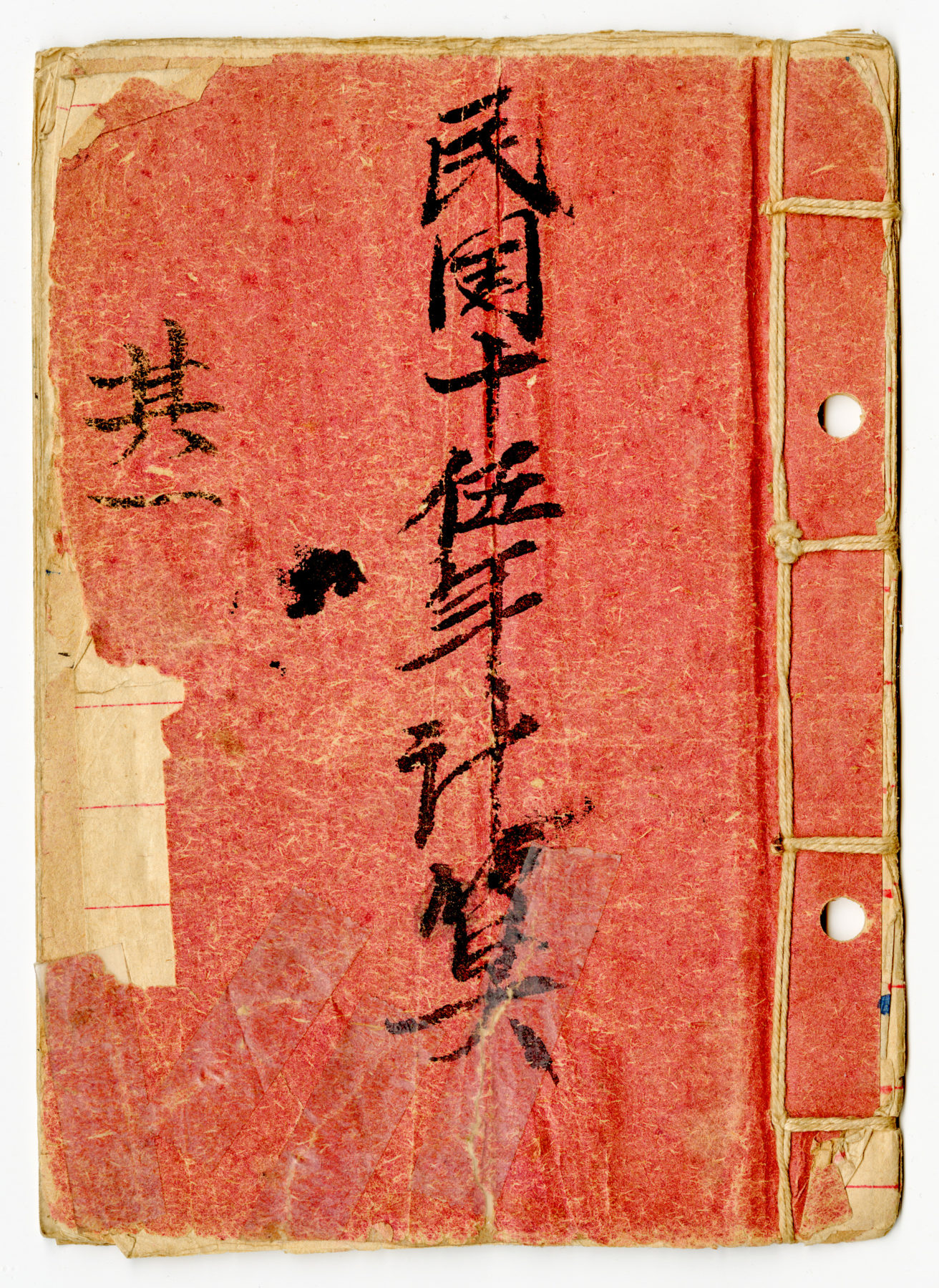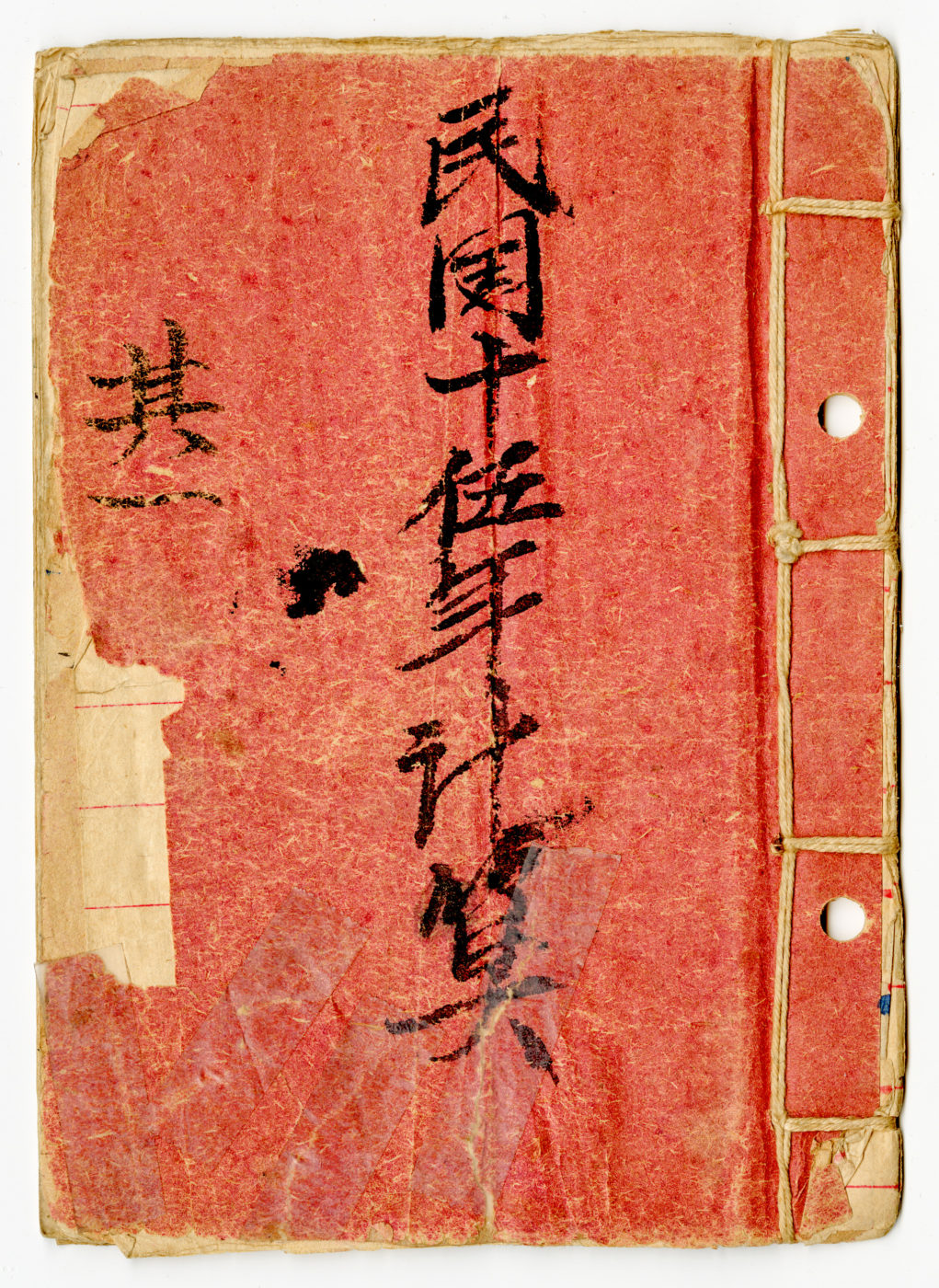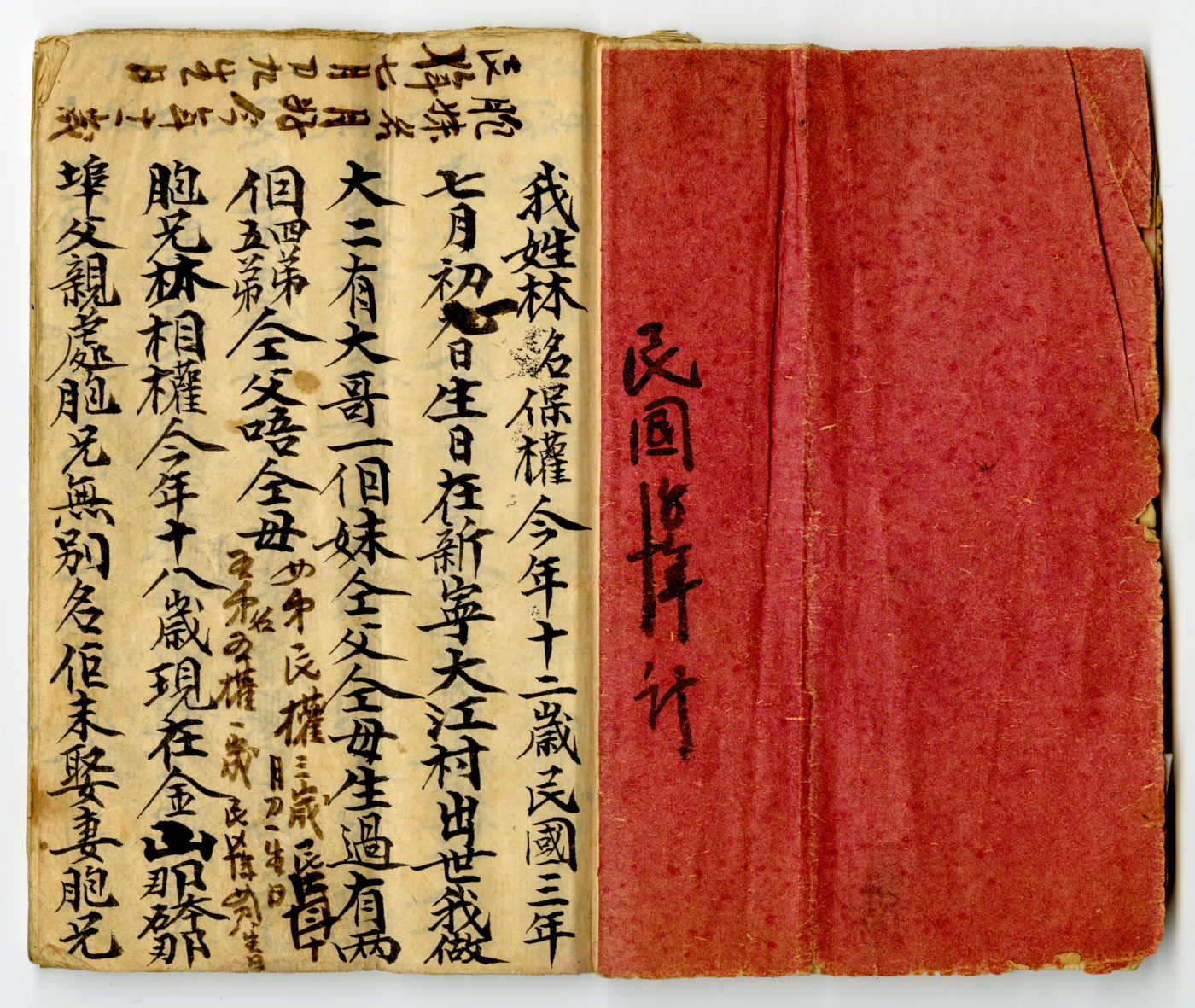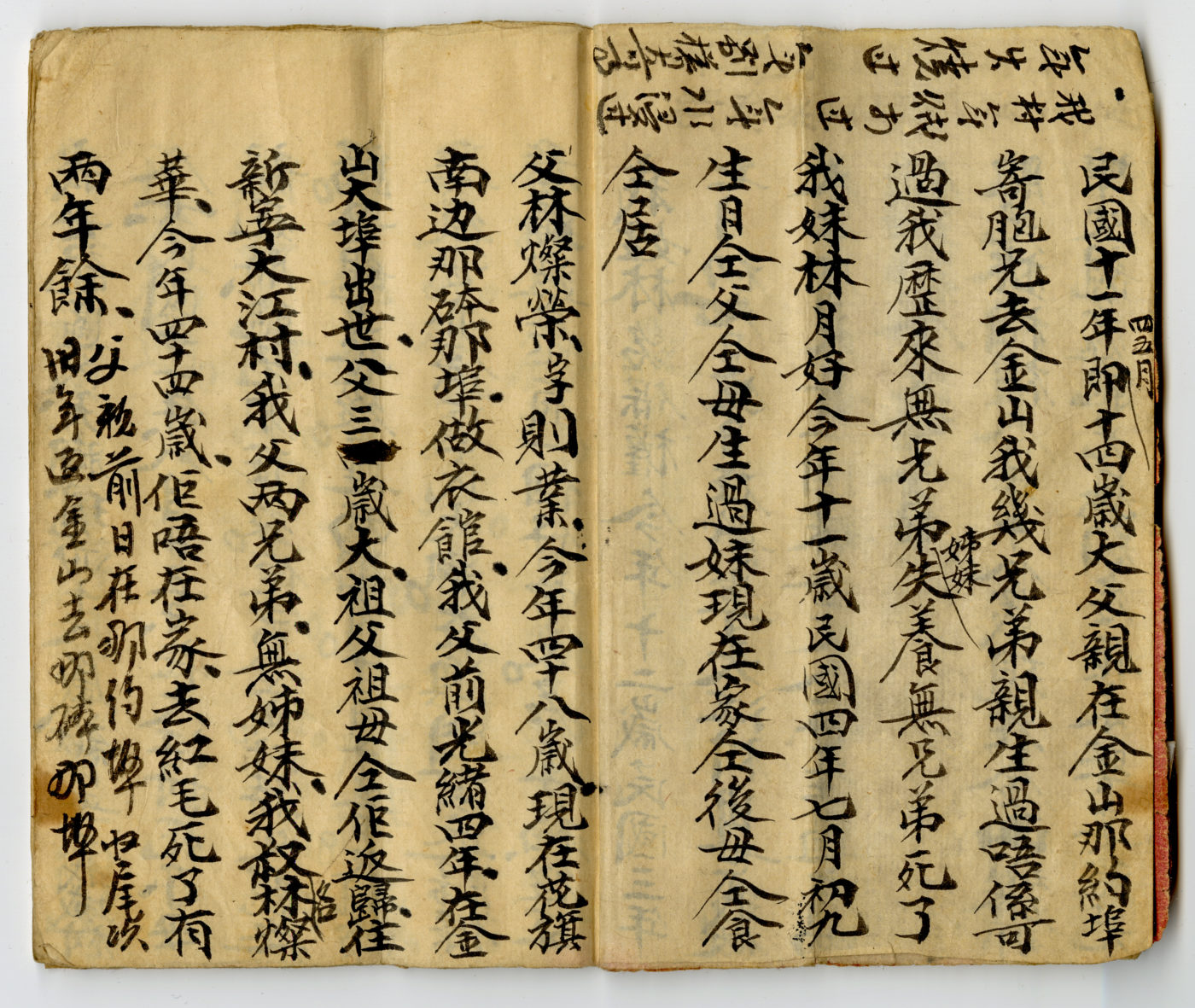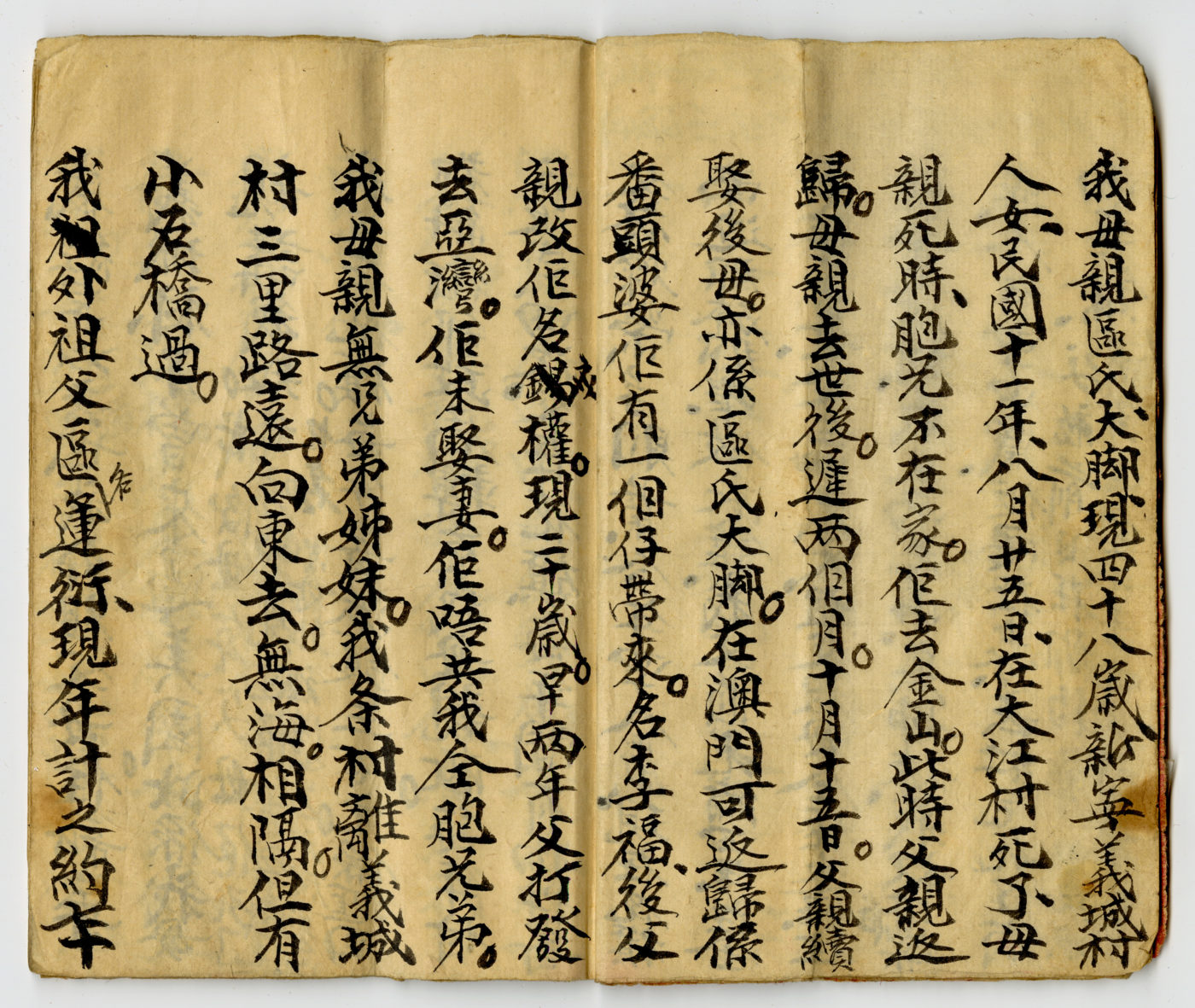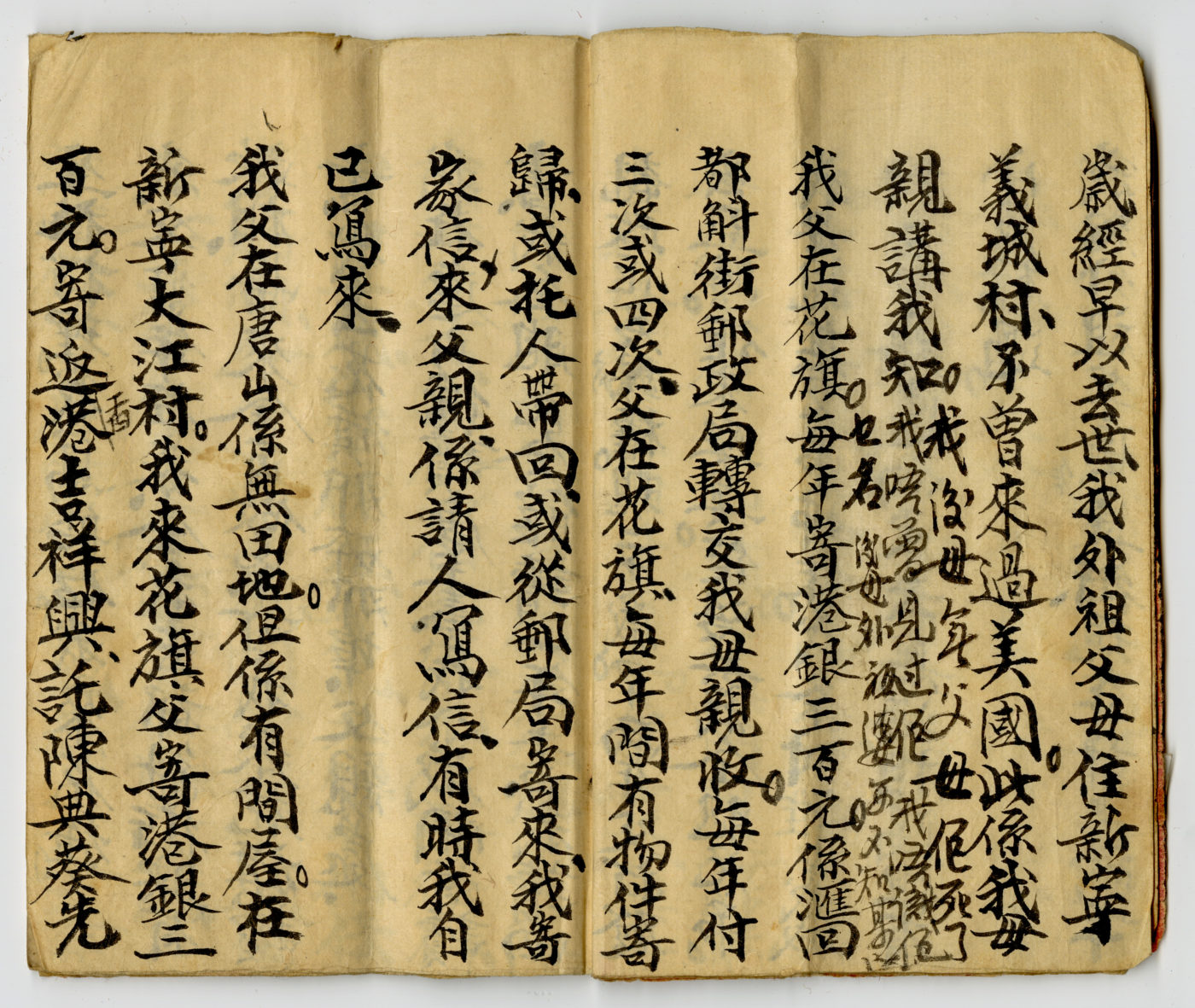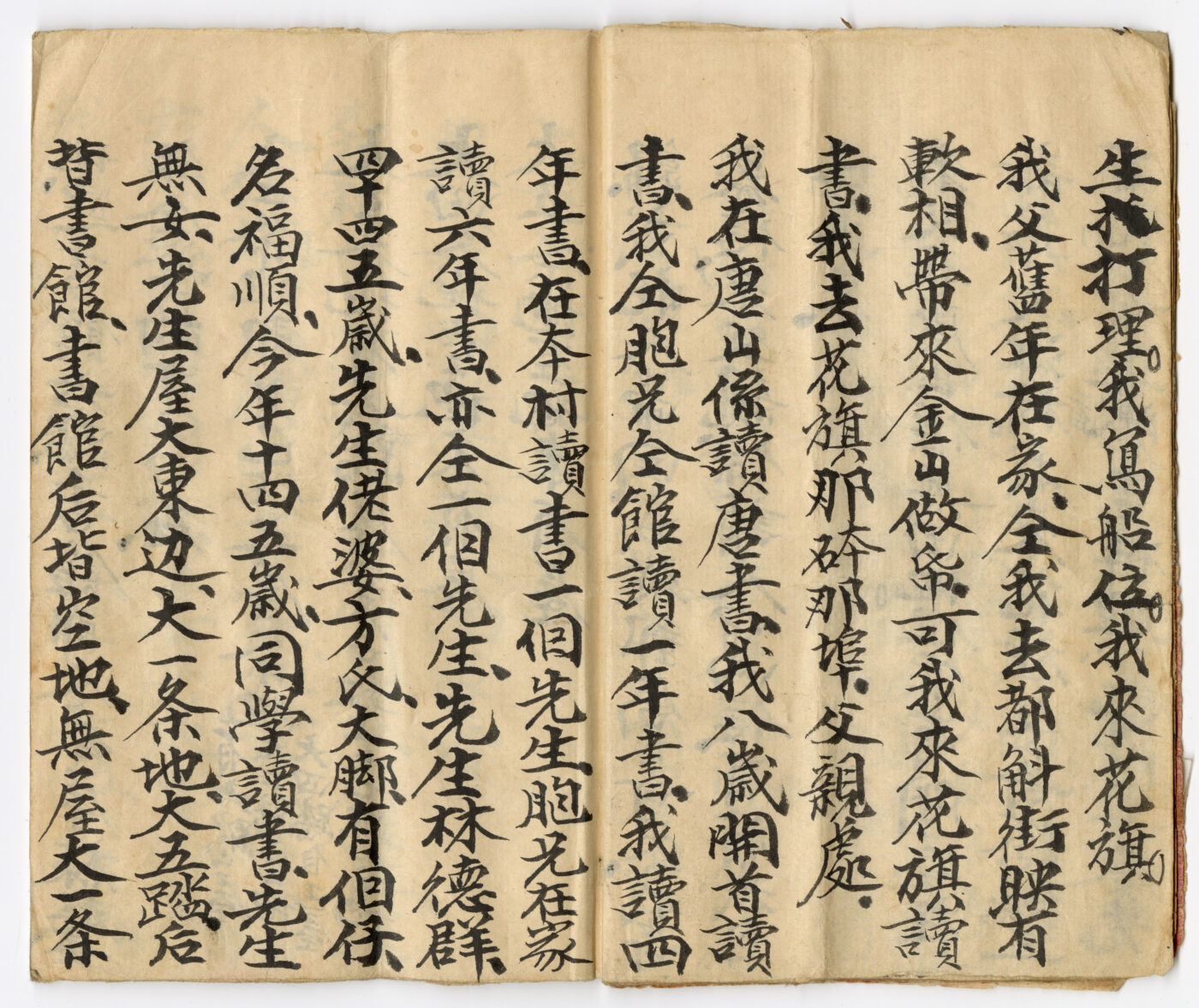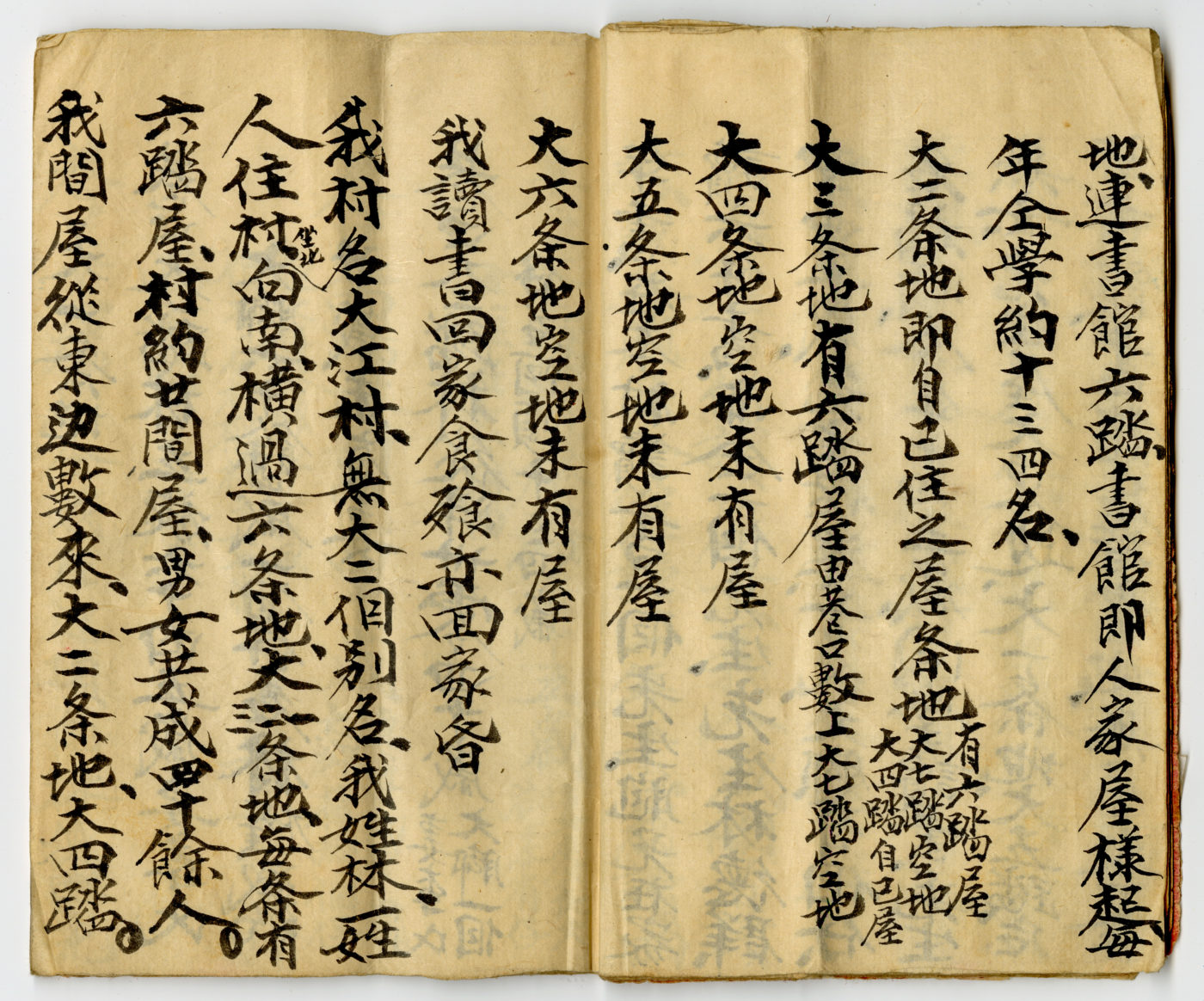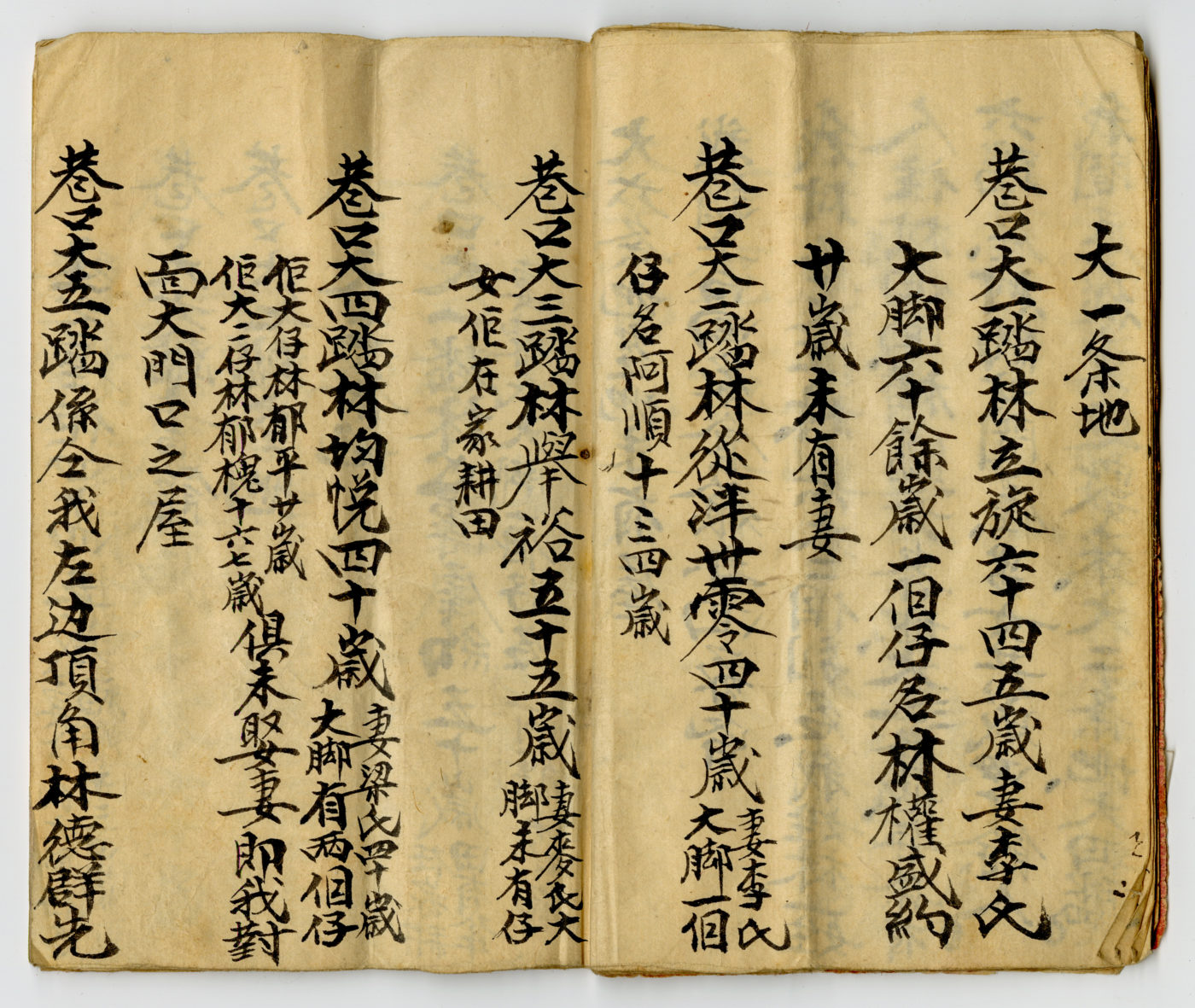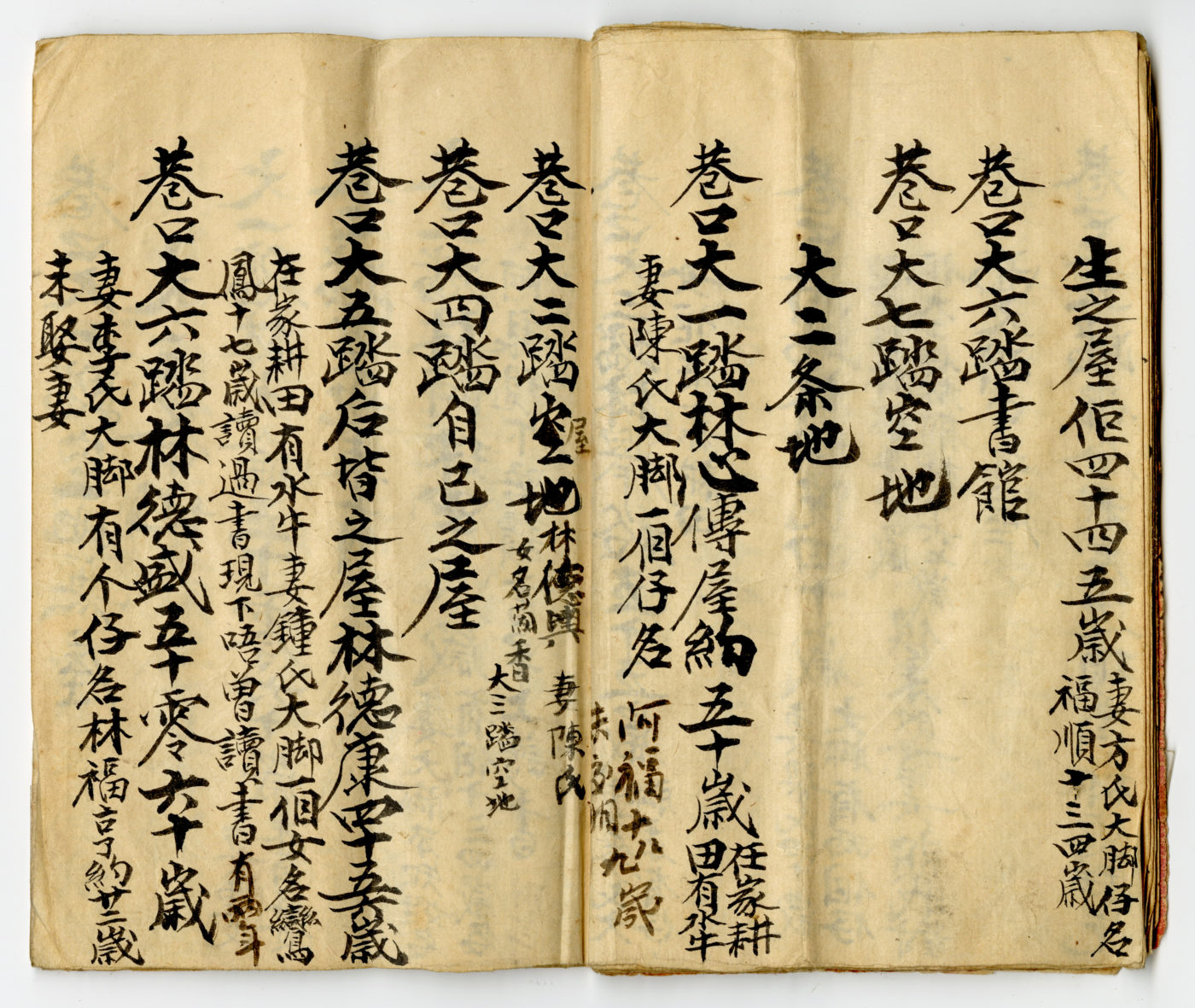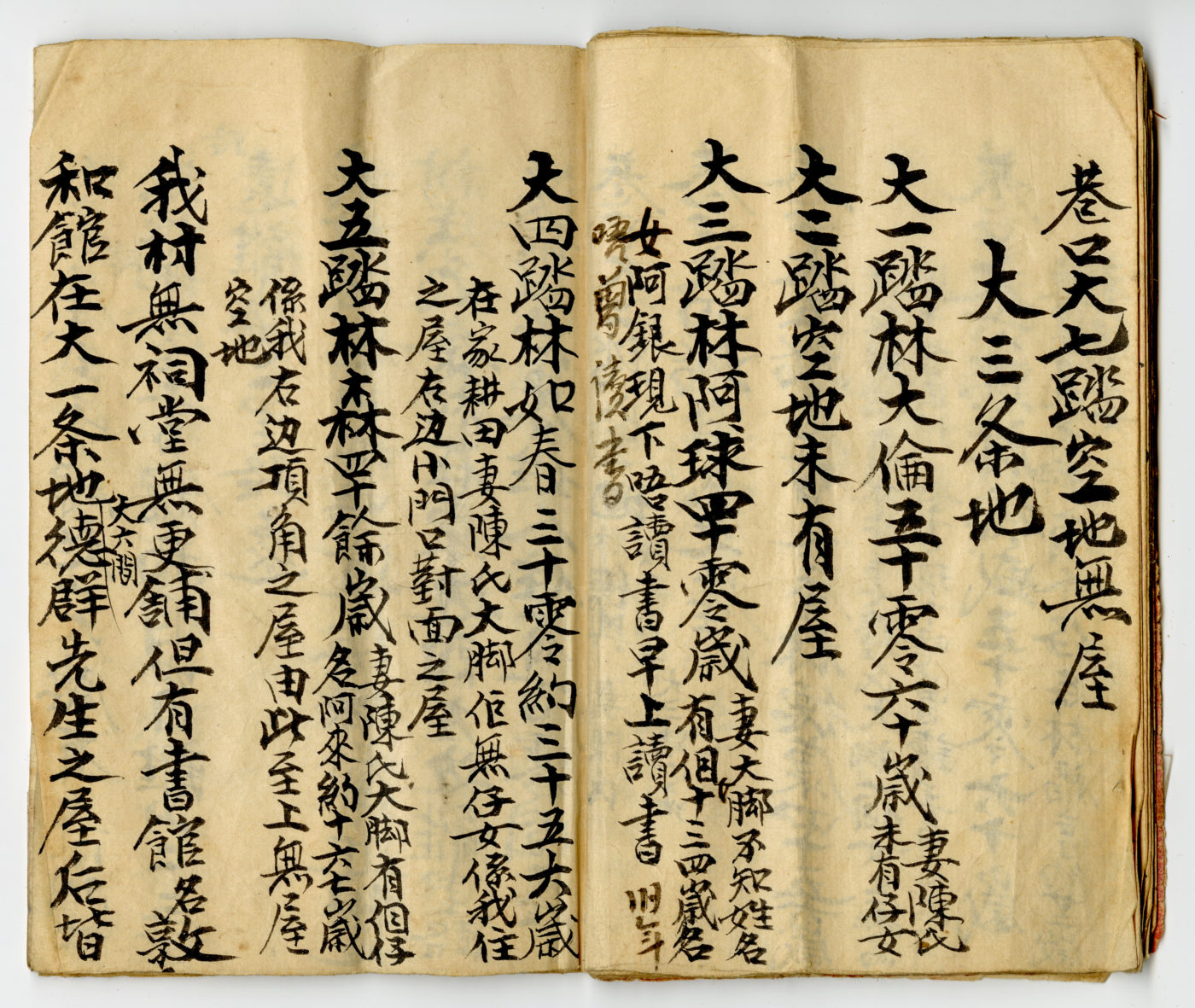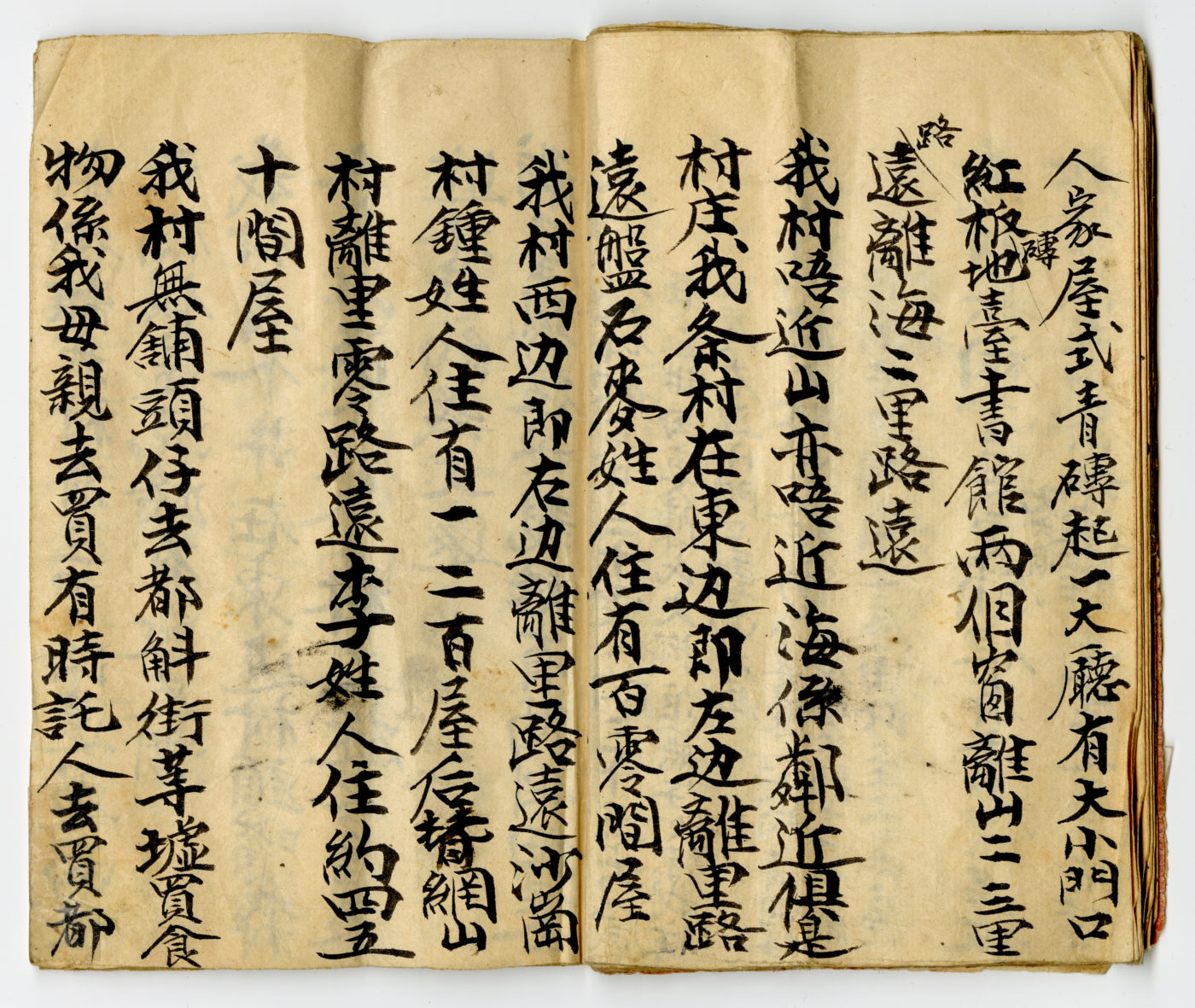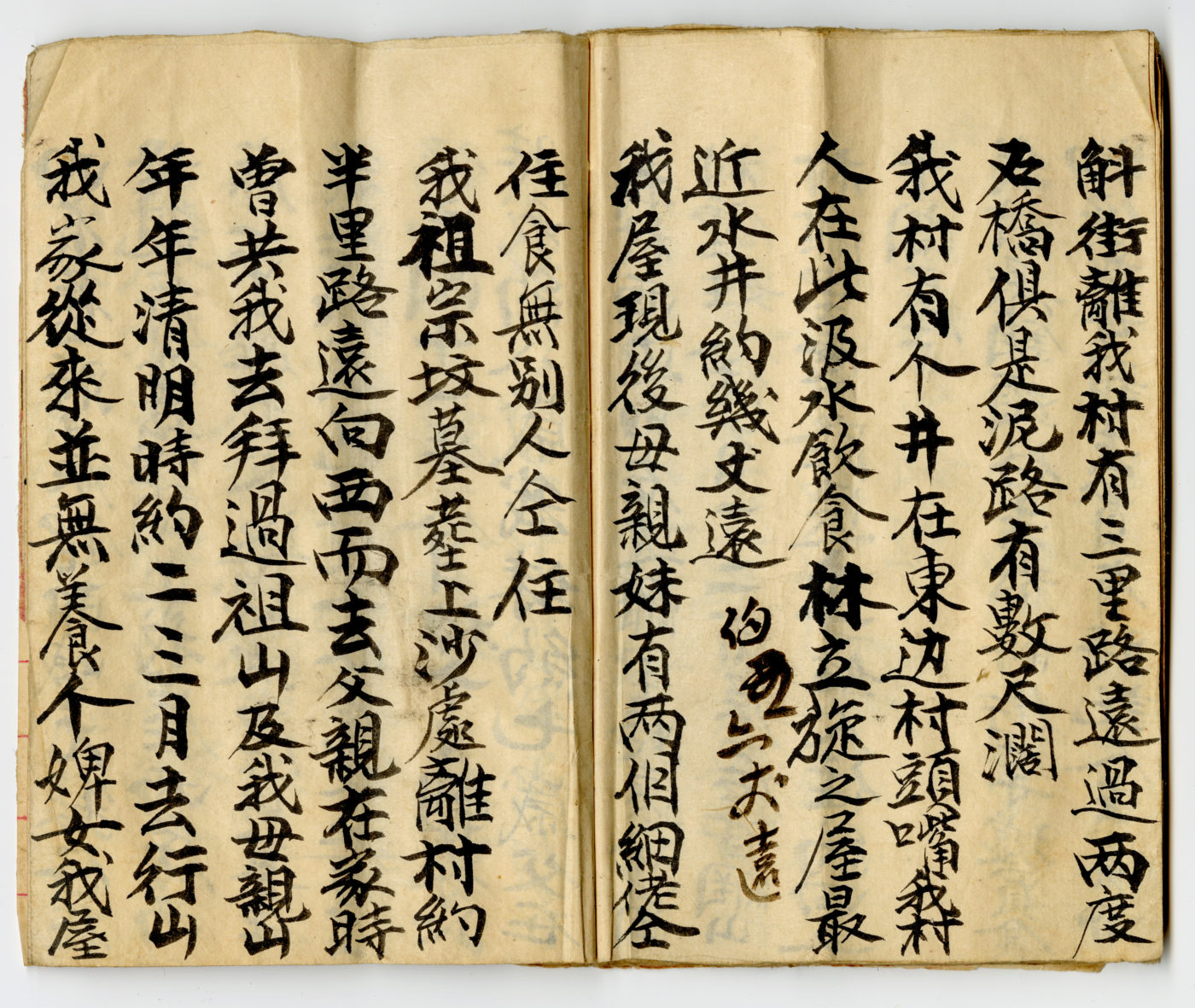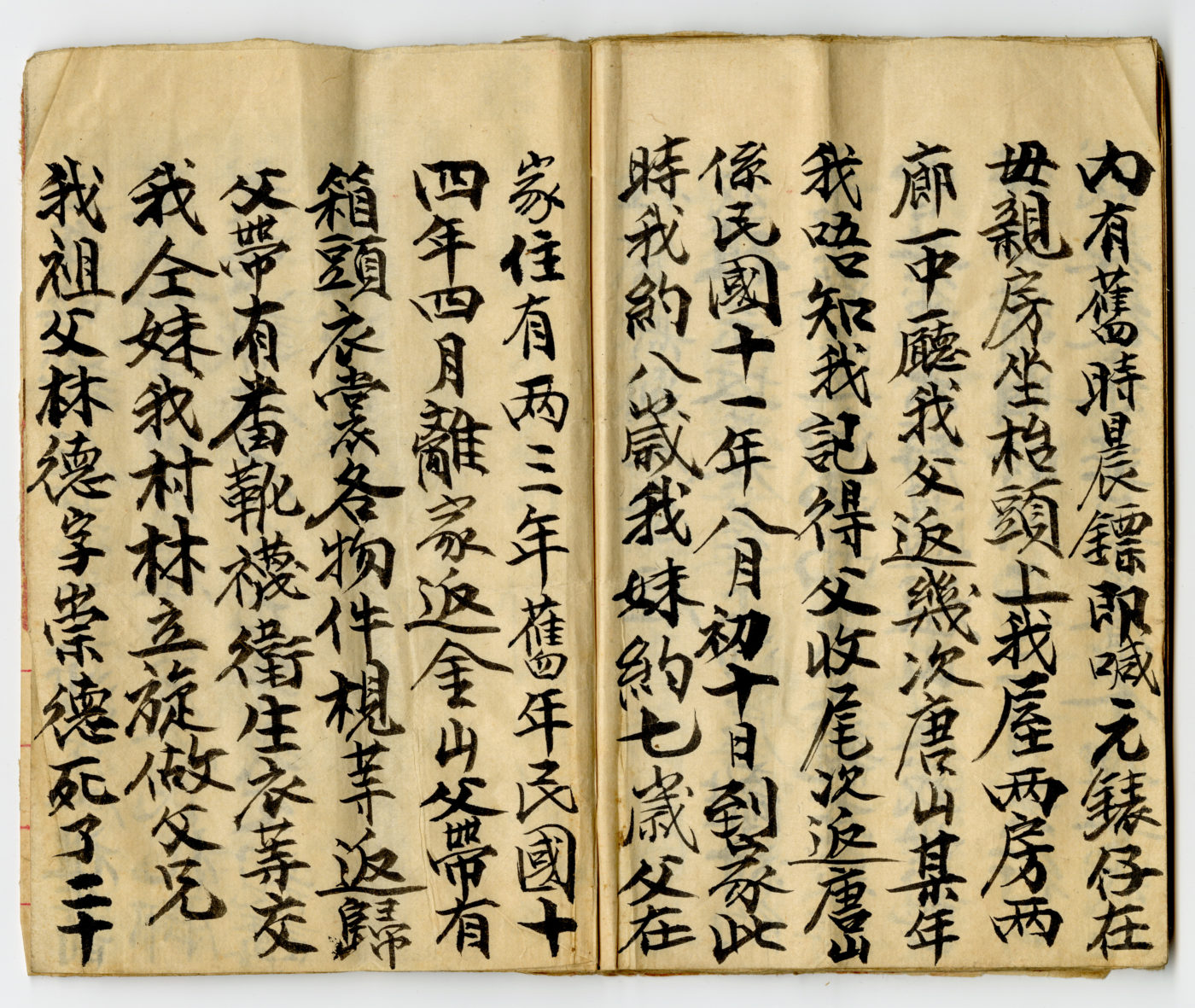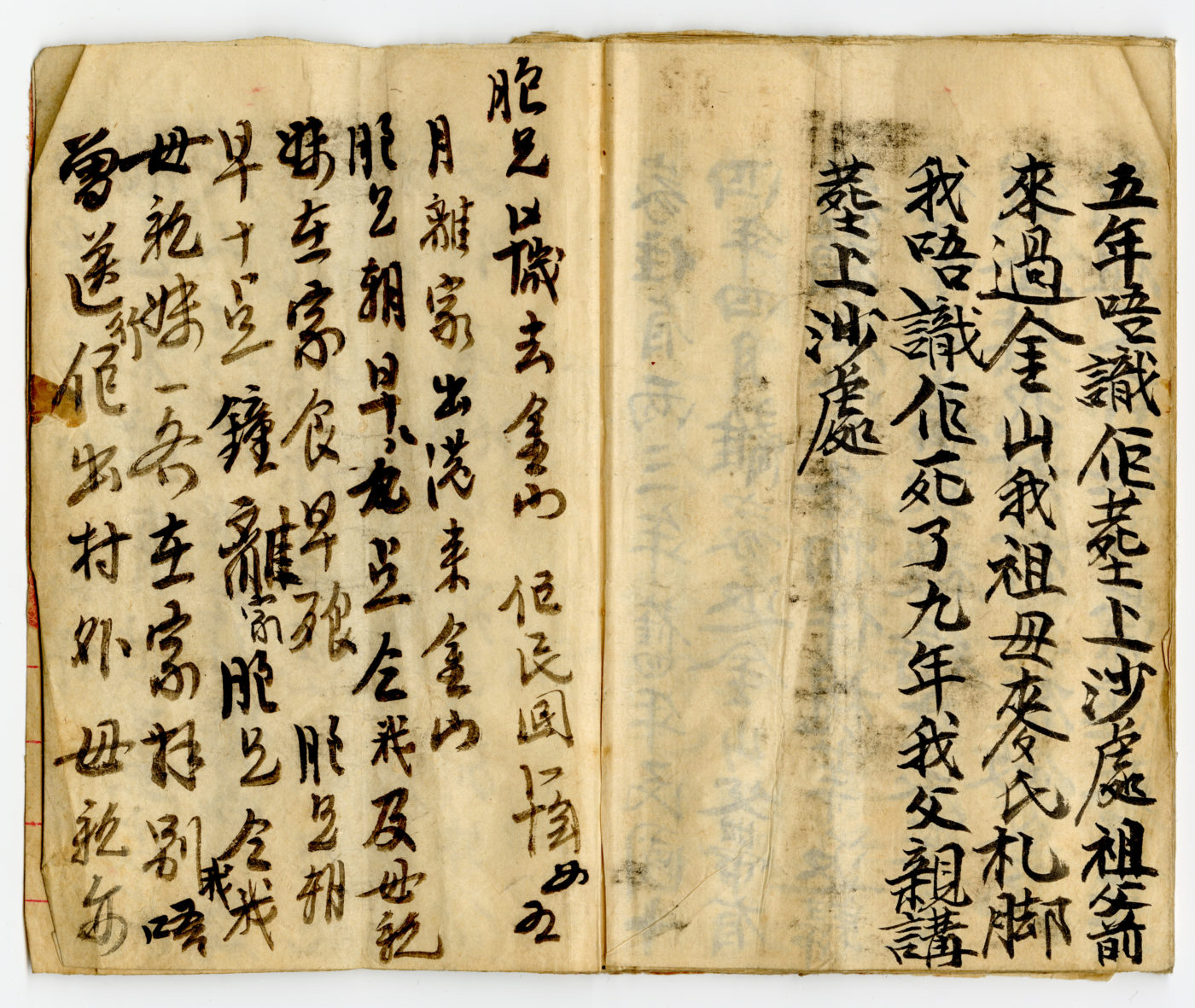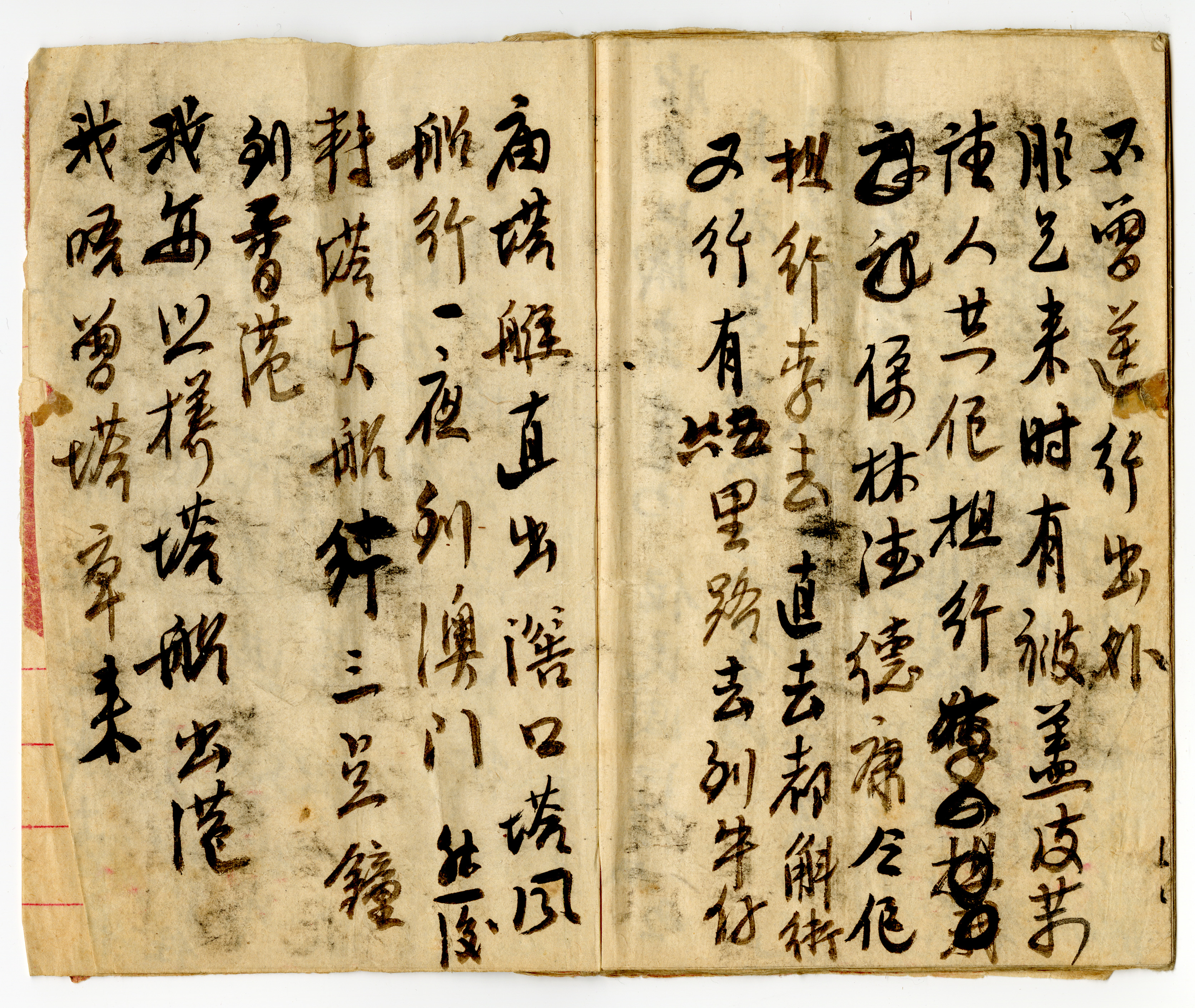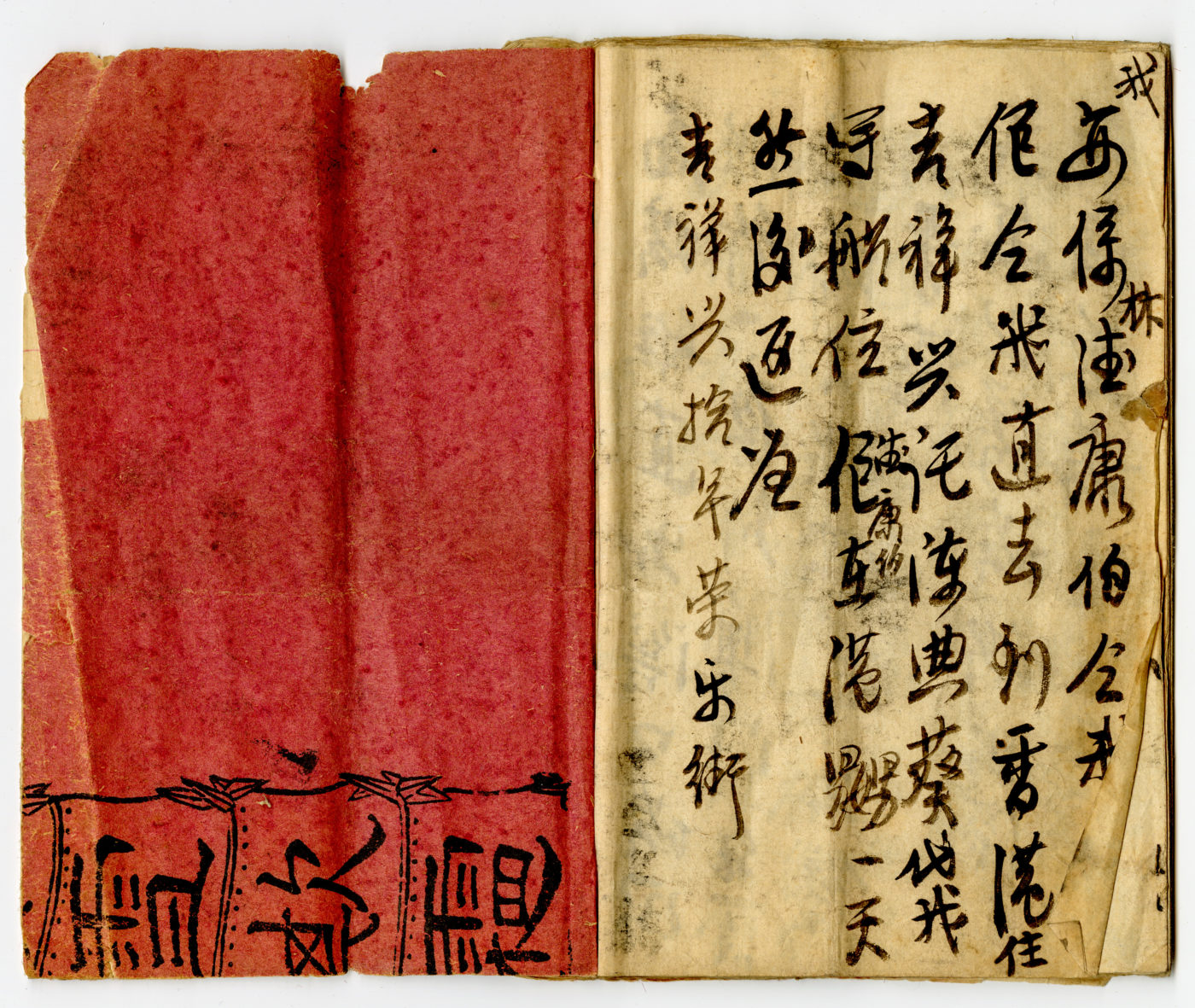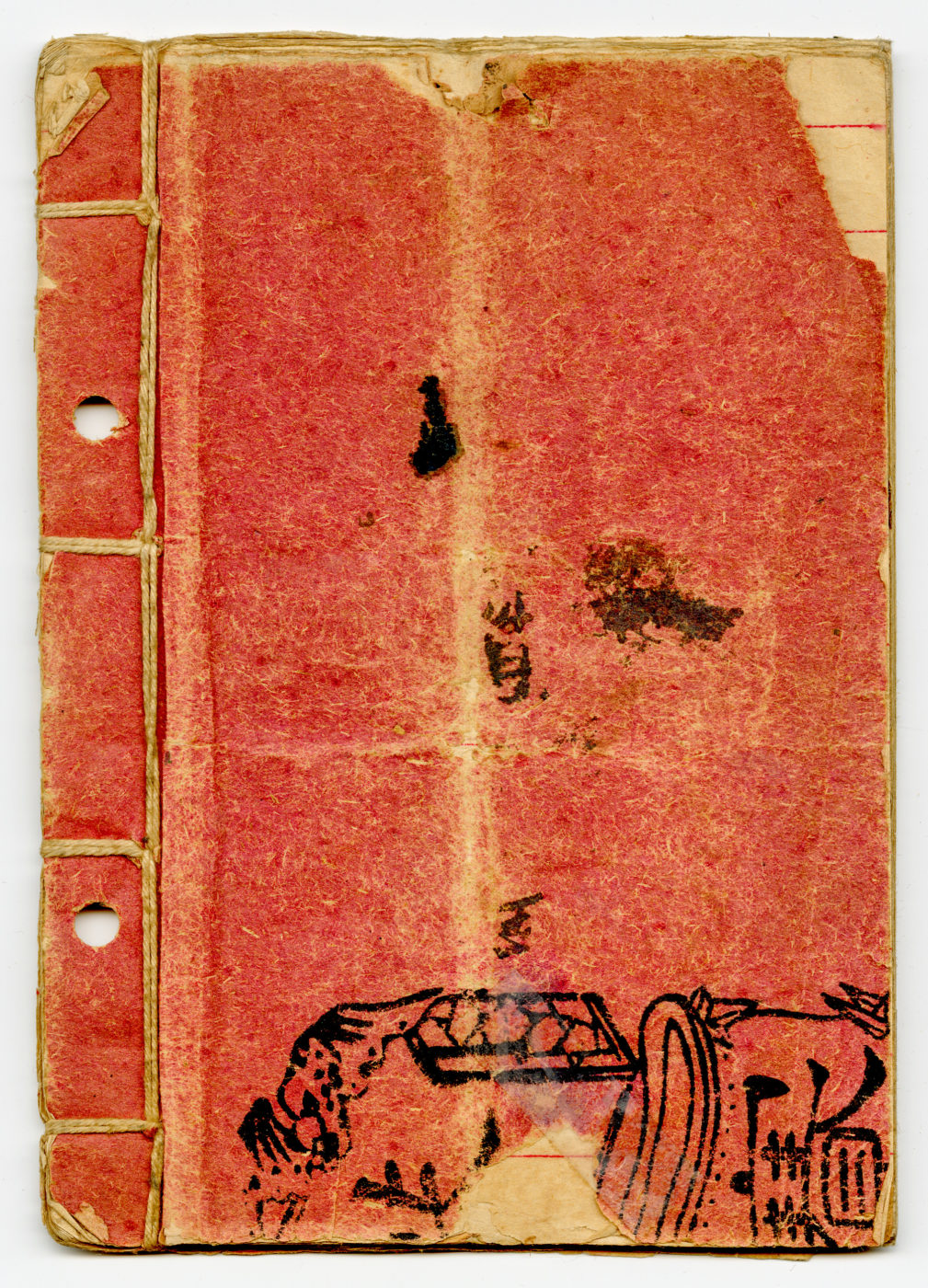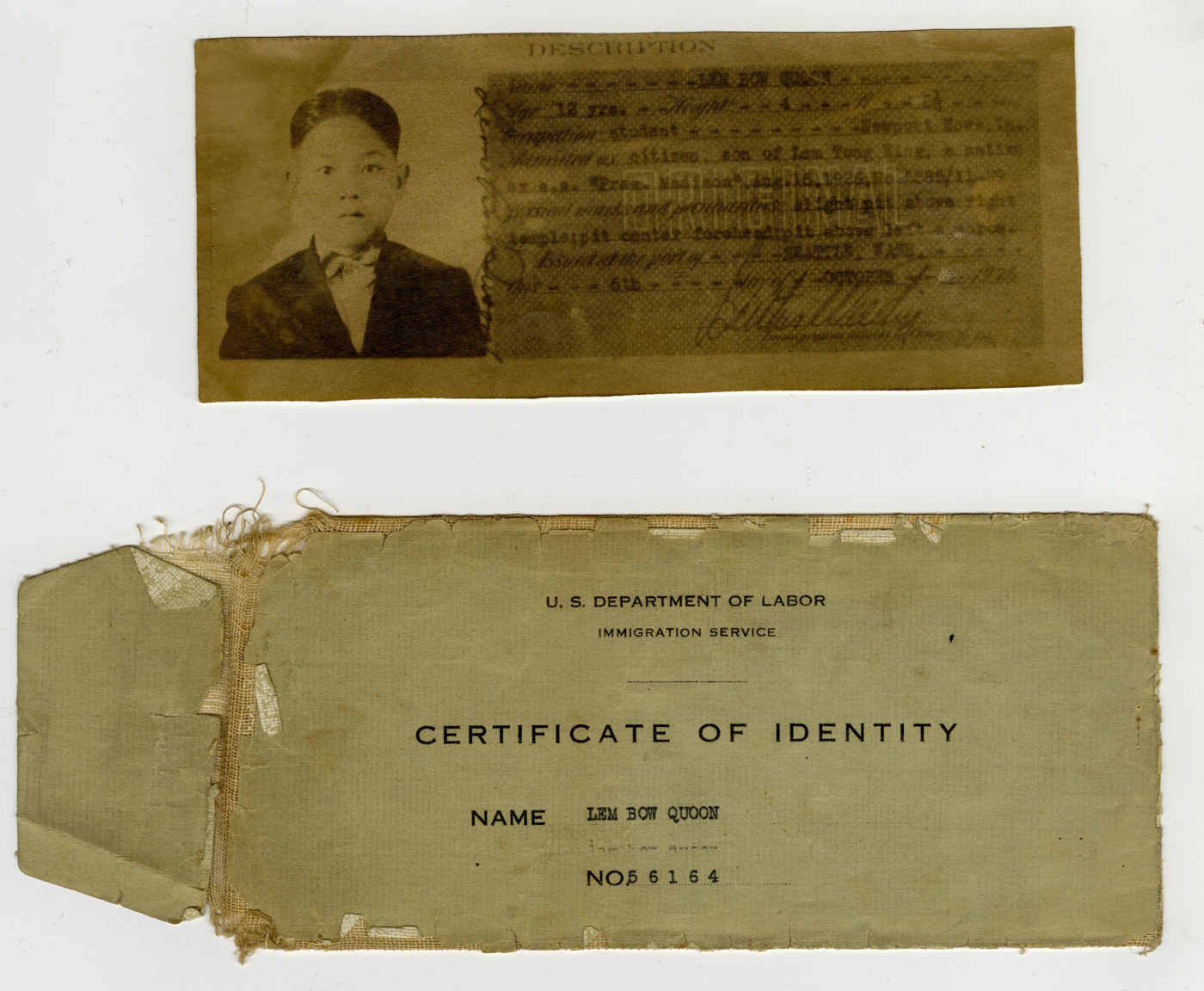This week we feature an amazing family artifact that was recently accepted into the MOCA Collections. Gifted to us by Warren and Howard Lem, this coaching book features 14 pages of family history and personal background that was used by Warren’s father, Arthur Lem, to immigrate to the United States in 1926. The purpose of a coaching book was to assist Arthur in memorizing relevant answers to questions related to his family and childhood during the interrogation phase to enter the United States. Details such as the size of his home, the size of his village, familial grave sites, and even family possessions are included in this particular coaching book. One would think that such details would not require a book to recall memories and experiences, especially for Arthur who was only 12 years old in 1926. But the reality is that his real name is Chin Dong-Art. “Arthur Lem” was his “paper son” name, a false identity used to claim the right to enter the United States through his “father” that has a claim to citizenship in the United States.
Arthur Lem would make it through the interrogation and create a life for himself here in the United States. He would marry Rose Lee, the sister of Betty Lee Sung, and open a restaurant called the Chungking Royal in Hempstead, Long Island. Over the years, Arthur’s name would appear in local as well as national newspapers. During his time as a restaurant proprietor, Arthur would be heavily involved with community affairs participating in charities, leading community organizations, and assisting other Chinese members working and bringing family over from China.
Unfortunately, his prominence in the Nassau community did not protect him and his wife from being accused of “smuggling” Chinese for profit in 1959. His false identity as Arthur Lem would also be discovered and work against his case. Rose Lem’s charges would be dismissed but Arthur would eventually plead guilty after the judge refused to accept his nolle contendre (no defense) plea. Warren, Howard, and other family members noted that his father plead guilty as a result of being unable to financially sustain the legal defense costs. Arthur would receive an eighteen-month jail sentence from the Federal Court in Brooklyn.
